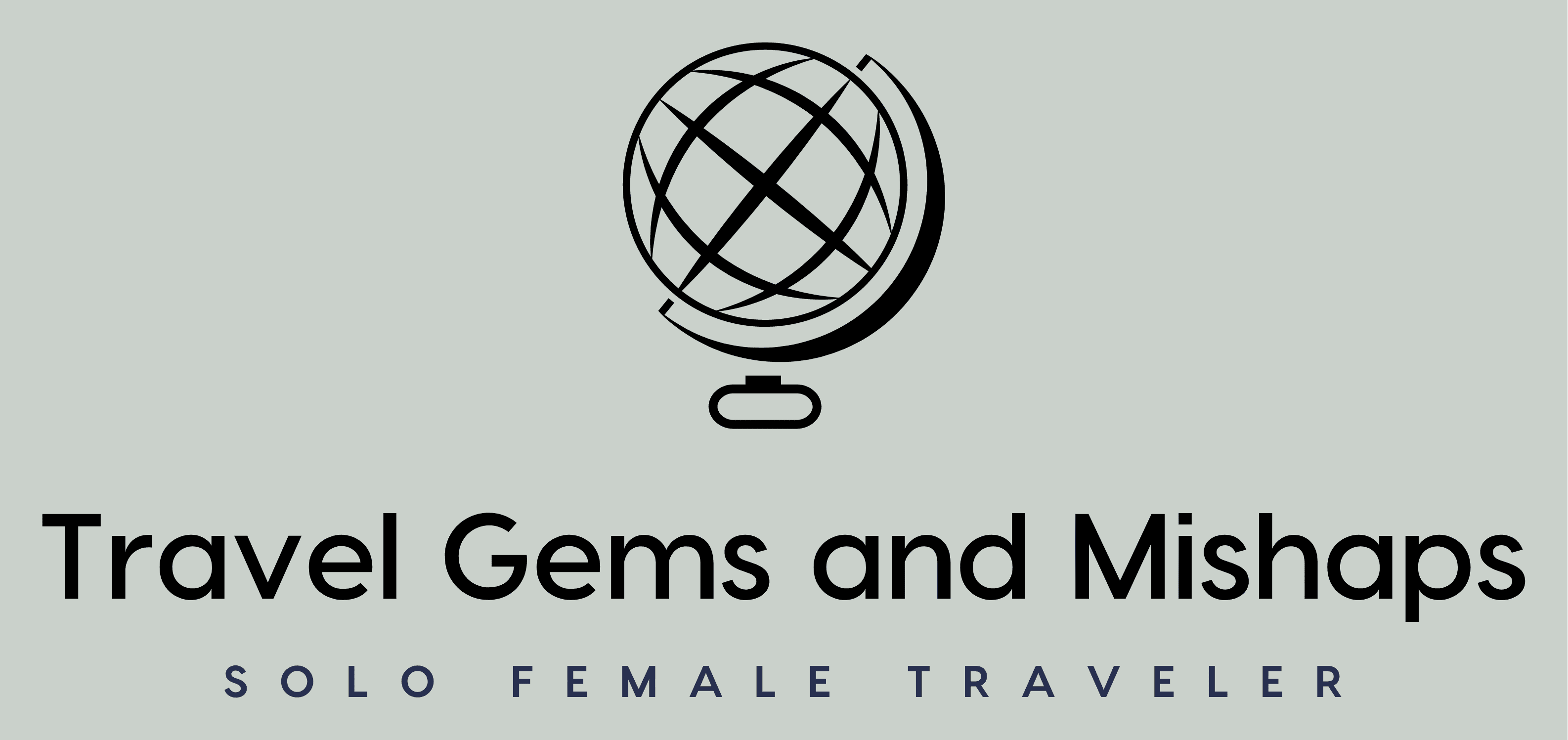Kuala Lumpur, the capital of Malaysia, is situated on the west coast of the peninsular Malaysia in the South China Sea. It is considered one of the fastest growing cities in Asia, with a population of 7.5m. Malaysia also occupies part of the island of Borneo.
The local currency is Malaysian Ringgit (MYR). At the time of writing 1 Euro was equal to 5 MYR and 1 US Dollar was equal to 4.72 MYR.
The official language is Malay. English is widely spoken and Kuala Lumpur has a very cosmopolitan feel to it.
Kuala Lumpur International Airport is 45 miles south of the city. It is the hub for Malaysian Airlines and has flights to and from all major cities across the World. It is very well serviced by rail and bus. When I arrived on a flight from Fukuoka in Japan, I got a train very easily to the city center.
You can also travel by train from Singapore (4.5 to 5 hrs, costs approximately €52 for a standard one way ticket) and Penang (This is on the other Malaysian Island, journey takes 4.5-5 hrs and costs approximately €15 for a standard one way ticket. You can then take a short boat journey to Georgetown, Penang).
Kuala Lumpur is referred to by locals and known around the world as KL.
Most nationalities can visit Malaysia without a visa for up to 90 days. You receive an official stamp in your passport upon arrival.
I stayed with a friend who is from KL, so I had a guide for my short visit. This is what we did and saw :
Batu Caves
This is one of the most visited sites in the country. As soon as you arrive you will see why !
It is very easy to get to the Batu Caves as there is a train station nearby (Batu Caves Komuter Station). It is on several bus routes and there is a large adjacent car park.
There is no entrance fee to visit the site and it is open from 7.00am to 9.00pm every day. You can hire a guide to take you to the dark caves for a small price (less than 10 euros). Numbers are restricted to conserve the caves and the fauna.
A huge gold statue of Murugan (The Hindu God of War) stands at the entrance to the caves. It is 43m (140 ft) high and is extremely impressive. 272 brightly coloured steps take you up to the caves. There are lots of colourful Hindu shrines and temples at the foot of the steps and along the way up.


Batu Caves is the most visited Hindu Shrine outside of India.
The caves are thought to be around 400 million years old and were first used by the indigenous people for shelter. In 1890 the statute of Sri Murugan was installed at the foot of the caves and it was declared a sacred site. Wooden steps were added later and completed in 1940. They were only painted in the bright colours in 2018. Painting them caused some issues. It has been reported that the proper authorisation, to make changes required for a Heritage site, was not received. However they have remained painted in an array of bright colours.
Do watch out for the monkeys when you visit as they are everywhere. They are territorial and we saw them snatch water bottles, bags, food and hats during our visit.
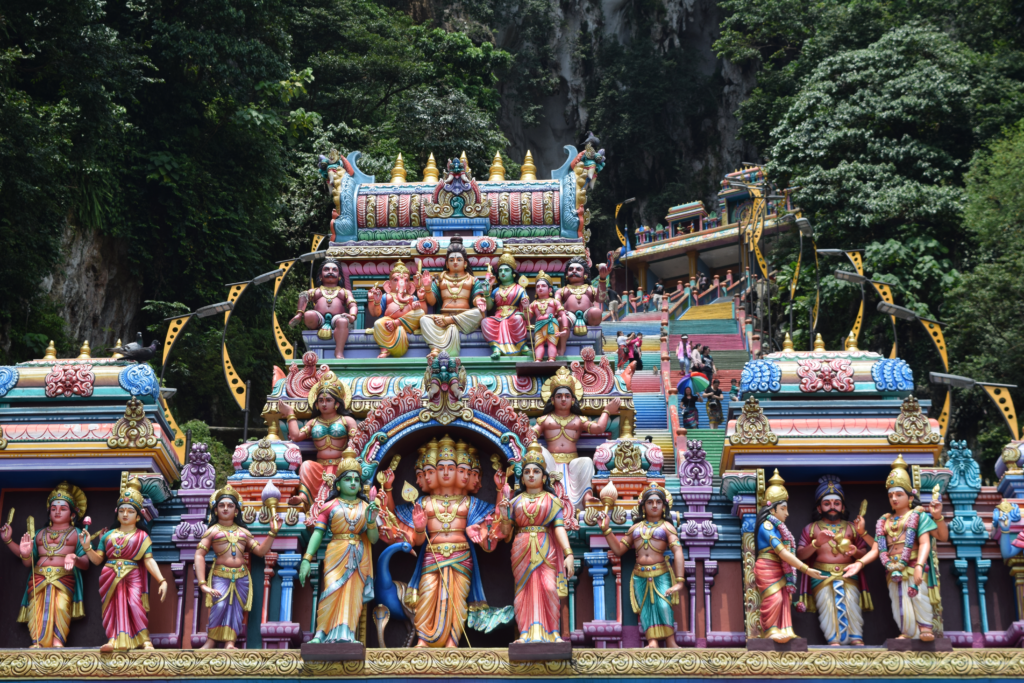

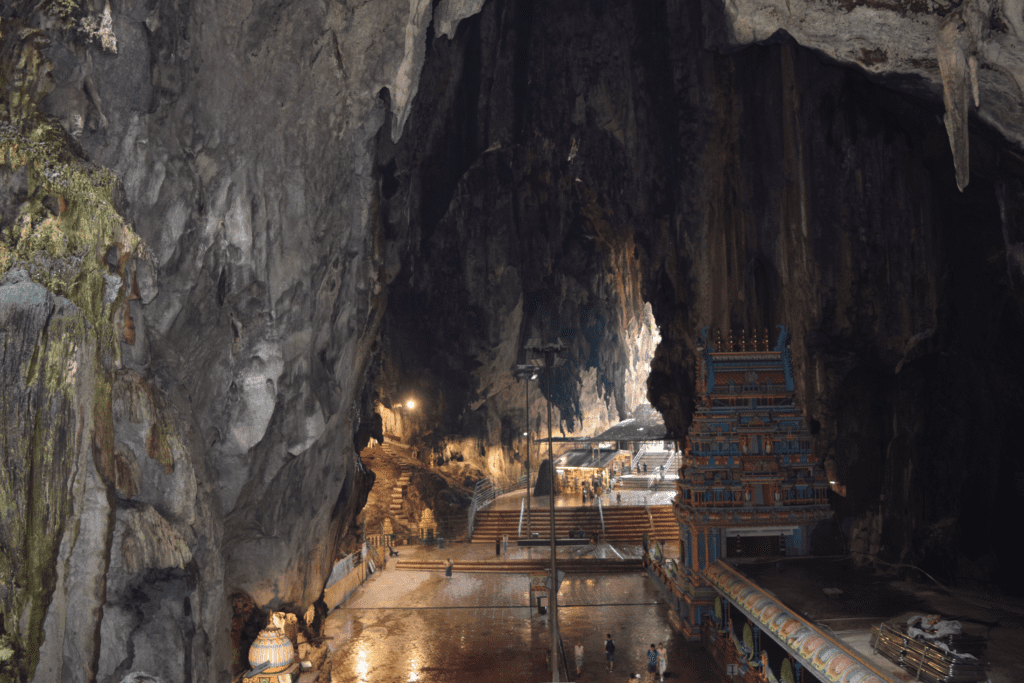
Batu (meaning rock) contains large limestone caves. You climb the 272 steps to enter the caves. The caves are large with lots of native plants and fauna. Apart from the monkeys there were also several hens and roosters wandering around. You can see the stalactites and stalagmites everywhere and you can also catch a glimpse of the sunlight through the gaps.
This is really an amazing place to visit and one I highly recommend but watch out for the monkeys !
Downtown Kuala Lumpur
The KL skyline is recognised globally due to the Petronas Twin Towers. They are interlinked with a glass walkway and has 88 floors. They are 452m (1,482 ft) high. This makes them 9m (28ft) higher than the Empire State Building i.e. to the top of the sphere. They were the tallest buildings in the World until 2004, but were then surpassed by 101 Taipei. In 2019, the Exchange 106 building in KL was completed and it is taller than the Towers. They still hold the honour of being the Worlds largest twin towers.


“Tower One” is fully occupied by Petronas (the Petroleum company) and “Tower Two” houses several global companies including Microsoft, Huawei Technologies, IBM and Al Jazerra.
The Petronas Philharmonic Hall and a large shopping complex are at the base. The shopping center has lots of luxury branded shops. There is also a well maintained 17 acre park right beside it. It has lots of walkways, paths and a children’s playground.
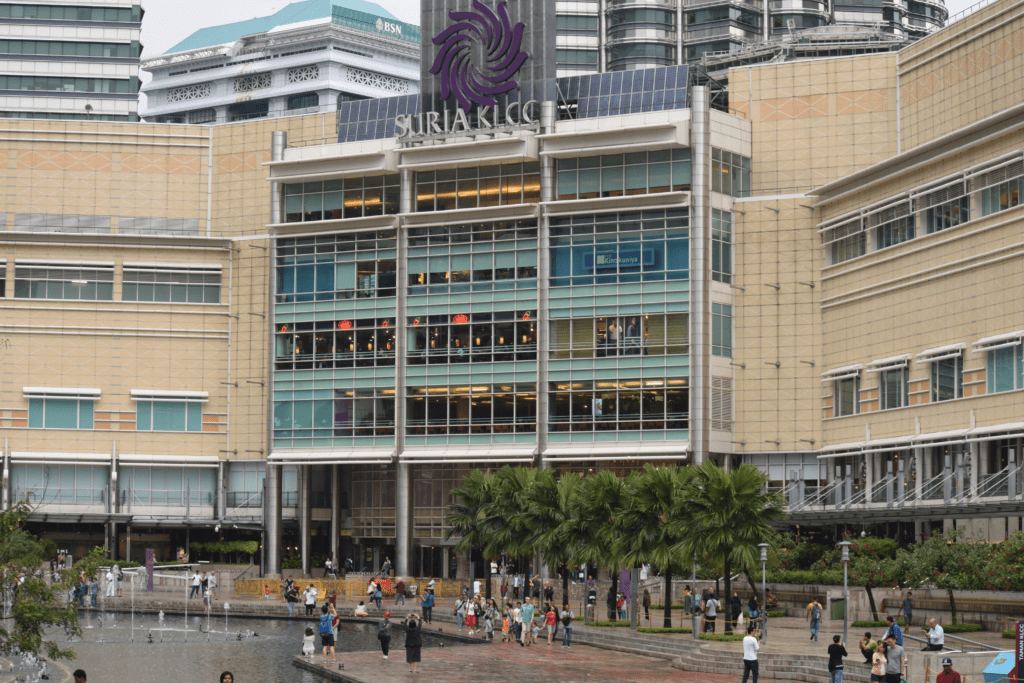
Do try and see the towers during the day and at night. They really are very different, when they are lit up at night, than they are during the day.
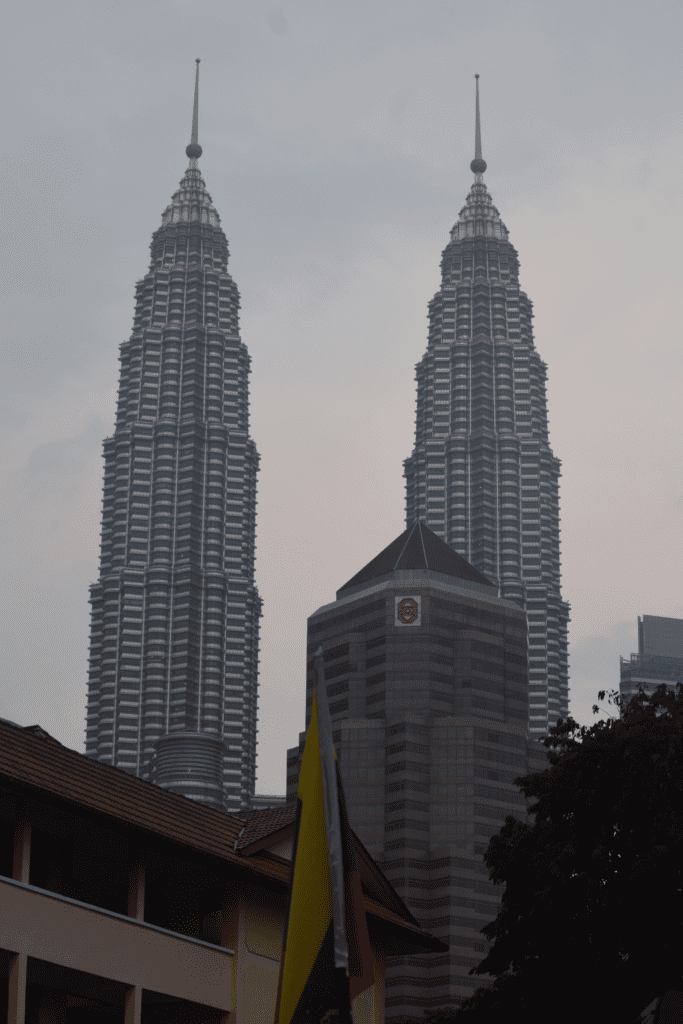
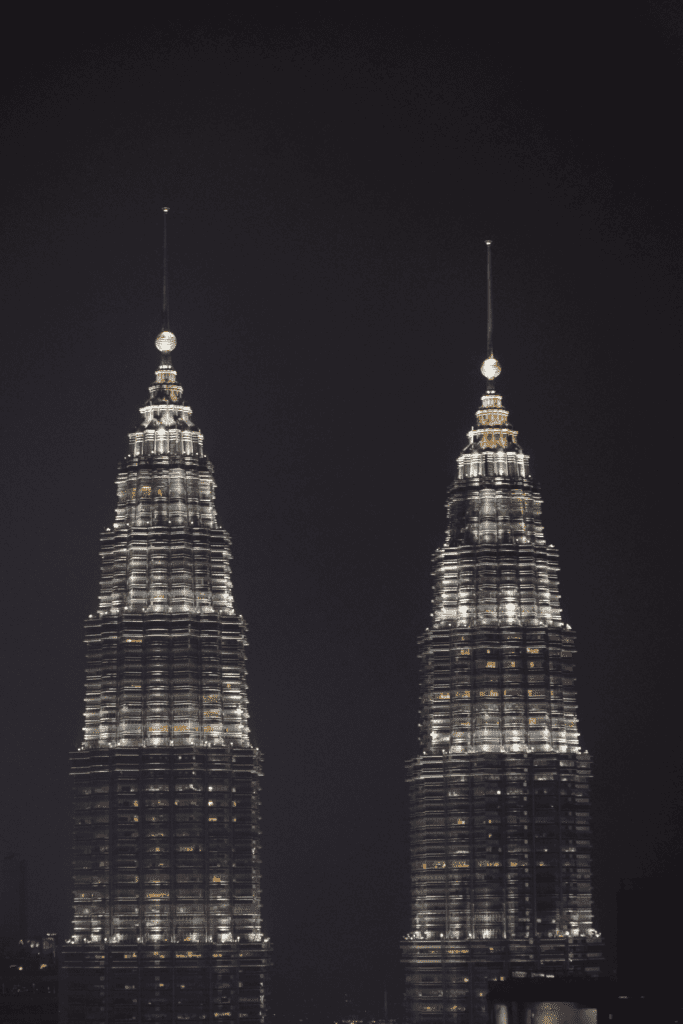
The Gombak and the Klang rivers meet in KL. Situated right at the confluence is the Jamek Mosque. It is called the Friday Mosque by the locals. The Mosque has a Moorish design and has two minarets in distinctive pink and white brickwork. It has 3 domes, the largest is 21m (70 ft) high.
Kuala Lumpur is in large yellow letters, making this a great place for a photo opportunity.

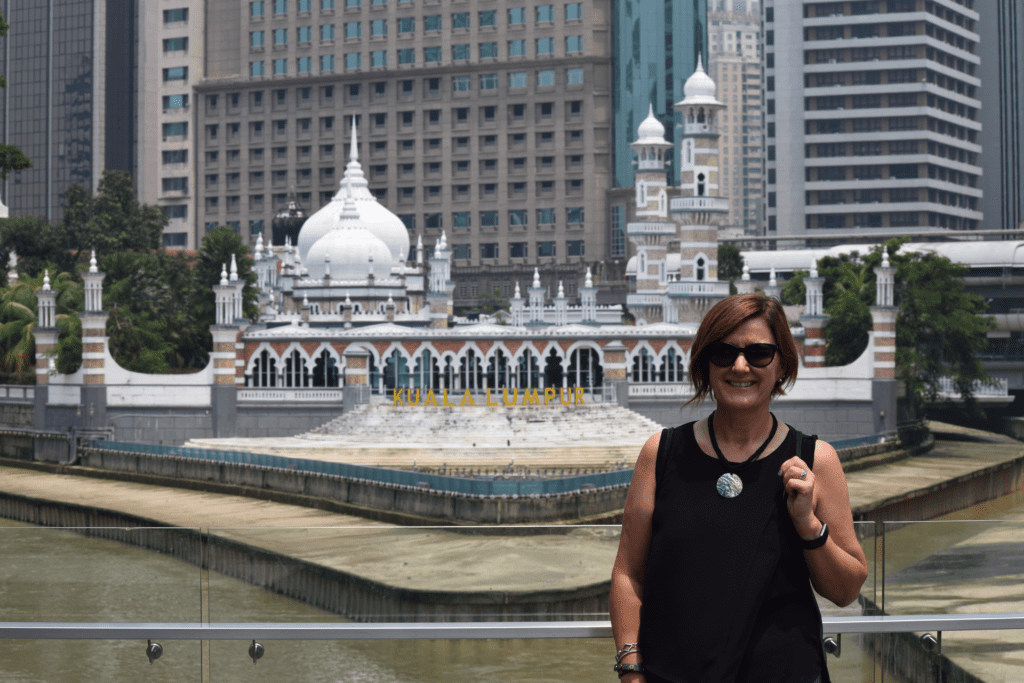
There are lots of markets and areas to shop in KL. It also has some of the largest shopping centres (malls) in the World. Some are over 1 million square feet.
Petaling Street is in Chinatown and is known for low priced clothing, accessories, counterfeit goods and reproductions. It has a lively feel with locals and tourists mingling, searching for a bargain.
You can easily get lost in Berjaya Times Square, which is the largest shopping center in KL. It has over 1,000 shops, including some local brands like Vincci (shoes & bags), Padini (Clothing) and Seed (Clothing). These are all affordable brands so worth visiting if you want to purchase Malaysian goods. I wanted a guide book and was glad I was with my friend, as it would have taken me ages to find the bookshop, in this huge complex.
Pavilion KL is also worth visiting.As well as the crystal fountain which is photographed by a lot of visitors, this center has everything from high end shops, to spas, restaurants and cinemas. Tokyo Street and the Gourmet Emporium are two of the best areas to visit.
The main thing that struck me when walking and driving around the city is that it has lots of different architecture everywhere. You see modern high-rises, beside Mosques, temples and historical buildings. The British colonial influence is visible as well as Moorish architecture. My friend did tell me that there are lots of pickpockets and muggings in KL. She warned me to be careful with the small bag I had across my shoulder and body. She said if anyone grabbed it, I should let it go and not try to hold onto it. There have been incidents where people on motorbikes tried to steal bags. When tourists held onto them, they were dragged along the road and injured. I was surprised to hear this and I did find myself looking around a lot to ensure I was aware of my surroundings.

You also see the national flag on lots of buildings and huge red glass Hibiscus installations on tops of lampposts. Hibiscus is the national flower of Malaysia.


Royal Selangor Pewter Visitor Center
Royal Selangor was founded in 1885 and its pewter goods are sold throughout the World. They have a great visitor center in KL which I highly recommend. It is one of the most visited places in KL, according to several tourist websites.
The museum contains thousands of samples of their work. They are the largest manufacture of Pewter goods in the world. Some items will be recognisable as they make lots of trophies for world sporting events.


As I worked for Disney for so long, I was delighted to see these Disney and Lucas Film characters on display.


You can watch the craftspeople at work and learn all about this amazing skill.

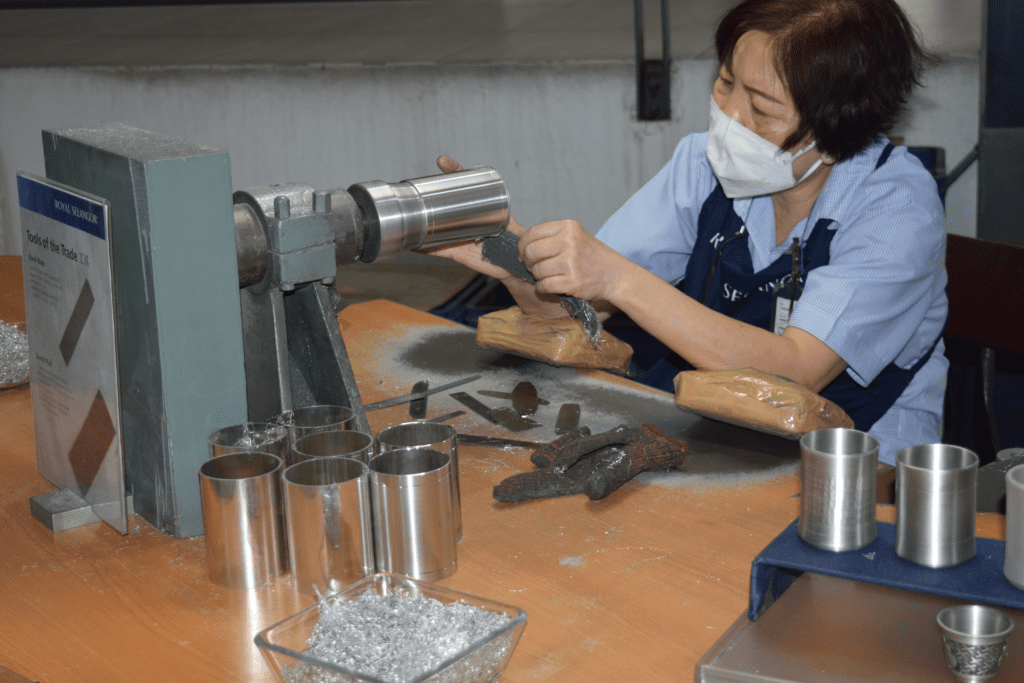

You can easily spend a few hours here walking around. Some items are available to purchase and they are relatively cheap. I purchased a pendant which I love.
There is a lovely cafe serving local dishes including cakes, teas and coffees. Don’t leave without seeing the replica of the Petronas Towers made from 7,000 pewter tankards. Also ensure you get your photo taken outside with the World’s largest tankard !
Admission to the Visitor Center and the car park is free. It is also accessible by local buses, trains and trams. The nearest tram stop is Wangsa Manu and the nearest train stop is Sri Maju.
Food and Drink
As Malaysia is such a multi-cultural country, the influences of several cuisines are seen in the food.
Nasi Lemak is the unofficial national dish of Malaysia. Fragrant rice is soaked in coconut milk and served with chicken wings, fish, hard boiled eggs, chilli and salted peanuts.
Murtabak are stuffed omelet pancakes which the locals eat at various meals. They are usually stuffed with minced meat, onions and spicy sauces. They are then panfried.
Laksa is a spicy noodle soup with thick noodles in a curry base. Prawns, fishcake and bean curd are then served on the top.
Pisang Goreng is a fried banana fritter that is extremely popular with the locals. Lots of people will tell you it’s one of their favourite foods from their childhood.
Beverages appear to be influenced by Indian and Chinese traditions. You can get a huge variety of teas and juices everywhere. Ingredients are extremely fresh and they are inexpensive.
Teh Tarik, translated to “Pulled Tea”, is considered the National drink. It is black tea, served with sugar and condensed milk. It is poured between 2 cups to add a frothy top and is served hot. This reminded me of having traditional Chai tea made for me, when I visited India.
Barley Juice is made from pearl barley. Sugar and lime juice is added. It’s a clear liquid and has a thick consistency. I have never seen barley served with anything sweet and was surprised that it was actually delicious.
As Malaysia is a Muslim country, alcohol isn’t available in traditional restaurants. It is widely available in other restaurants for non-muslims to purchase. It can also be purchased in supermarkets.
I highly recommend you have a cocktail in one of the roof top bars to enjoy the wonderful KL skyline at night !
Royal Selangor Club
If you can get a local to invite you for lunch here, do go, as it is well worth it. It was founded in 1884 for the high ranking members of the British colonial society and is still steeped in tradition. The Mock Tudor Style buildings are surrounded by the cricket oval field.

You can only attend with a member. The food is excellent and if you can get a table with a view of Jalan Raja (King Road), like we did, you are in for a memorable lunch.
Ladies are not allowed to approach or order at the bar. You wait at the table and a server will assist you. There is a sign notifying you of this. While some readers may be offended by this, I just go with the flow when travelling and respect the local customs.
I really appreciated having lunch at this unique, historical place and it’s a lovely memory to have.
2 days certainly isn’t enough to visit such a vibrant and culturally diverse city. I certainly hope to visit again. As one of my closest friends lives in KL, I should have a bed and an invite at any time (I hope) !!!
